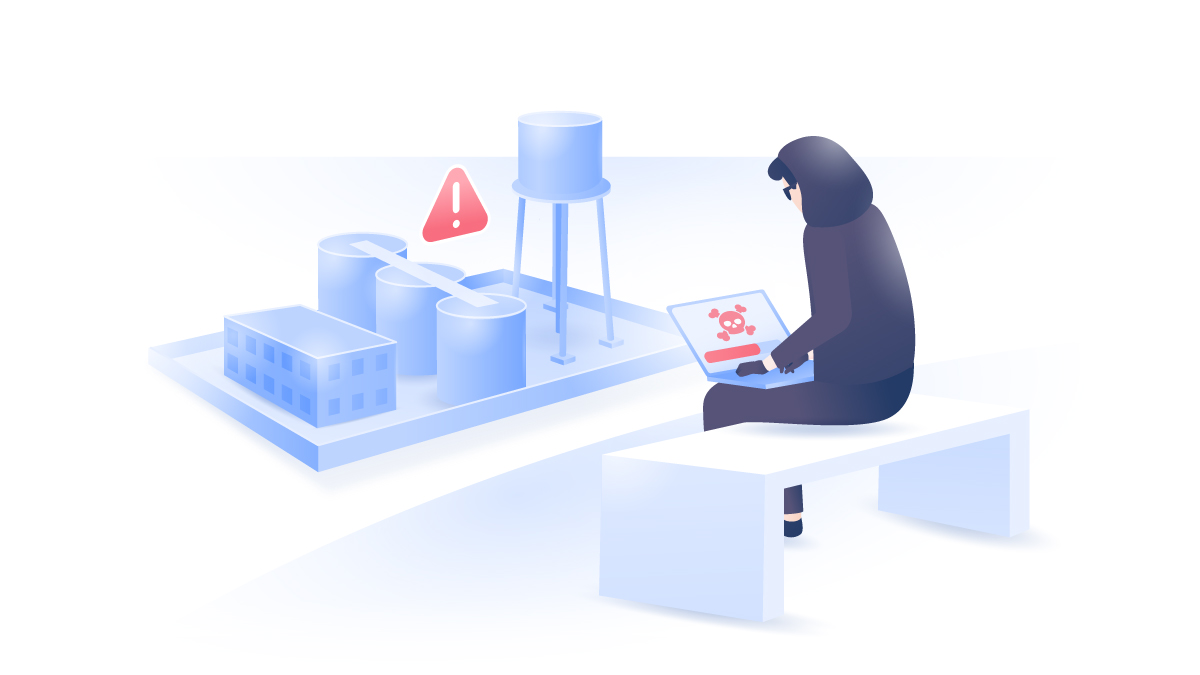What is packet sniffing, and how can you avoid it?
A packet sniffer can expose your data and put you at risk of further cyberattacks. Alternatively, packet sniffing tools can be used to improve network security and troubleshoot routing problems. In this article, we’ll explain how packet sniffing works, give you tips for protecting yourself from it, and discuss its legitimate uses.
What is packet sniffing?
Packet sniffing is a process in which data is monitored while moving across a network. This involves the inspection of network traffic using a packet sniffer (also known as a packet analyzer). Packet sniffers come in the form of both software and hardware.
People use packet sniffing for different reasons. Cybercriminals mainly practice packet sniffing for malicious purposes, such as:
- Snatching sensitive and personal data (for example, your login credentials)
- Monitoring someone’s online behavior and patterns
- Injecting some malicious code into a segment
- Spying on businesses for confidential information
Cybercriminals frequently use phishing tactics to infect users with malware that can initiate a packet sniffing attack.
Network technicians or admins also use packet sniffers to identify problems in a network. By analyzing the data provided by hardware sniffers, network technicians can determine issues such as failures in network request and response.
How does packet sniffing work?
When travelling across the network, our data is divided into smaller data packets. The data packets contain a lot of data about the sender, such as IP addresses, the nature of the request, and other content. This helps packets to reach their intended destinations and allows the receiving party to identify and assemble them.
Perpetrators can get hold of and inspect the packets during their journey. Using packet sniffing software, they convert the packet data into a readable form. In a way, this is similar to wiretapping, where stalkers plant a listening microchip in your telephone to hear your conversations. With packet sniffing, this is done by installing a virtual equivalent of a wiretap and analyzing the data piece by piece.
There are two types of packet sniffing: filtered and unfiltered. Filtered packet sniffing is when only certain packets are captured for inspection. Analyzers employ it when they look for specific data, checking only those parts that contain it. Sniffing is considered unfiltered when someone analyzes all the packets, no matter what data they contain. This usually allows them to get a broader profile of the targeted users and their online habits.
If someone wants to inspect packets traveling to a certain website, they can target only those that are close to their final destination.
What kind of information does packet sniffing gather?
Packet sniffing collects all the information contained in each network transmission. That means that, if your data is not encrypted, packets can be reassembled and viewed by whoever did the sniffing.
If you’re using a VPN to protect your data, or if the website you’re on uses proper encryption, a packet sniffing attack might not expose too much information about you and your online activity. However, if your data is unencrypted, someone could view the data packets traveling between you and a website server and access sensitive information like usernames and passwords.
Of course, not all packet sniffing activities are malicious, and there are many uses for this process, both good and bad.
Why people use packet sniffing
Here are just a few uses for packet sniffing:
- Admins can use the tool to check employees’ network usage and inform them in case they encounter any malicious processes or websites.
- Cybercriminals use packet sniffers to steal someone’s data or inject malicious codes.
- Network technicians use it to diagnose network issues and scan incoming network traffic for malicious codes.
- Corporations use packet analyzing to stalk rival companies or to surveil their employees.
- Government institutions and law enforcement agencies employ it for state surveillance purposes.
- Internet service providers can also use packet sniffing to monitor their customers’ traffic and possibly initiate bandwidth throttling.
- Advertisers employ this method to show users targeted content. They check the type of content users view and the ads on which they click to understand their interests. What’s more, they might go as far as to inject malicious ads into packets.
How do hackers use packet sniffing?
Hackers can use packet sniffing to covertly monitor a network and gather sensitive information transferred across it. If data packets are not encrypted, a hacker could extract password information and other details which could then be used to launch further attacks.
For example, if a hacker employed packet sniffing against the network of a large company, they might be able to gather enough information to access an employee’s accounts or devices. This, in turn, could set the stage for a phishing attack, as the hacker pretends to be the compromised employee, contacts their coworkers, and gains further privileges.
Encryption is probably the best way to limit these threats. Whatever method you choose, protecting yourself and your networks from packet sniffing is vitally important.
How to protect yourself from packet sniffing
- Avoid unreliable public Wi-Fi networks. Hackers can set up their own routers and monitor all the network traffic that passes through them.
- Use a secure HTTPS protocol where possible. There are a number of extensions which can turn HTTP into HTTPS — just make sure you use safe and reliable ones. Still, it’s a good idea to use a VPN, as HTTPS does not encrypt all of your network traffic. Therefore, a VPN and HTTPS should always go together;
- Always update your security software.
- Avoid clicking on suspicious links or messages, as those often contain malware which hackers use for attacks.
- Use a VPN service. What is a VPN? It will encrypt your traffic and hide your IP, so no one will be able to inspect it and see what you do online. Services like NordVPN offer both enhanced privacy and protection against threats like packet sniffing attacks. NordVPN also has the Threat Protection feature that helps you identify malware-ridden files, stops you from landing on malicious websites, and blocks trackers and intrusive ads.
When should I consider using packet sniffing?
You might consider using packet sniffing when administrating a large network, as part of a network monitoring tool set. While packet sniffing can be used for malicious purposes, it is also a useful tool for technical troubleshooting and cybersecurity.
Packet sniffing can help network administrates notice improper routing or switching early. It can also help them identify potential security risks — for example, if they pick up packets without adequate encryption, or pick up signs of data egress. Administrators can also use packet sniffing to flag up applications that are using too much bandwidth.
In general, it’s just an effective way to track network usage. Sniffing packets can show usage trends on a network — what resources are being used more or less over time — as well as resolving potential weak spots in security before they can be picked up by hackers.
Want to read more like this?
Get the latest news and tips from NordVPN.


